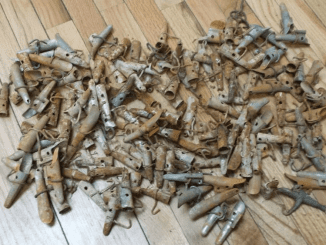Visual puzzles like “Find the Difference” are more than just fun—they’re brain-boosting challenges that improve focus, observation, and attention to detail. Today’s challenge is simple in theory but tricky in practice: spot the 3 differences between the two images of a man sitting on a bench next to a bird.
At first glance, the pictures look identical. But if you take a closer look, there are three subtle changes. Can you find them all before we reveal the answers?
Why Spot-the-Difference Games Are So Addictive

There’s something deeply satisfying about solving a visual puzzle. It pushes your brain to slow down and analyze details you’d normally ignore. In a world of fast scrolling and constant stimulation, spending a few minutes focusing on small differences can help train your brain to be more alert and precise.
These puzzles tap into your visual memory, spatial awareness, and pattern recognition—all crucial skills for problem-solving in everyday life.
Common Mistakes That People Make
Let’s face it—these puzzles are designed to trick your eyes. Here are a few reasons why people often miss the correct answers:
- You assume symmetry – Your brain wants both images to match, so it overlooks tiny irregularities.
- You focus only on big elements – The background, small shapes, or even colors often go unnoticed.
- You rush – Most people try to solve these in seconds, but the key is patience.
Even when we’re staring right at a difference, our minds can convince us everything looks the same. That’s what makes these puzzles such excellent brain exercises.
How to Solve This Puzzle Step by Step
Let’s break down the solution. Here’s how to spot all 3 differences in this charming bench-side scene.
Video : find 3 Differences.
✅ Difference 1: The Man’s Pocket Square
Look at the man’s suit pocket. In the left image, there’s a white square (his handkerchief) peeking out. But in the right image, the pocket square is completely gone.
It’s a small detail, but once you see it, you can’t unsee it!
✅ Difference 2: The Tie Shape
Now, look at the man’s tie. In the left image, the tie hangs straight and narrow. But in the right image, the tie is wider and shorter, almost as if it’s tucked in differently or drawn in a different shape.
Since it’s the same color, your eyes might miss it at first—but this is a classic visual trick.
✅ Difference 3: The Bird’s Wing
Check the orange bird sitting on the bench. In the left image, the bird has both wings showing—one tucked and one slightly raised. But in the right image, the wing facing us is missing.
This change is easy to overlook because our minds recognize the bird’s shape and don’t expect parts to vanish.

Summary of the 3 Differences (as circled in the image):
- The pocket square on the man’s jacket (missing in the right image).
- The shape of the tie (narrow in the left, wide in the right).
- The bird’s wing (present in the left, gone in the right).
Why Solving Puzzles Like This Is Good for You
These aren’t just games. Here’s what happens when you challenge yourself with a visual puzzle like this:
- Your short-term memory gets activated as you compare both images.
- Your attention to detail improves—you learn to look beyond the obvious.
- You boost your problem-solving speed without realizing it.
And best of all—it’s fun. It’s satisfying to find something hidden, especially when others miss it.
Invite Your Friends: Can They Spot the Differences?
This is where it gets social. Challenge your friends and family to solve this without showing them the circled image.
Ask them:
- Can you find all 3 differences without zooming in?
- How long did it take you?
- Which one was the hardest?
It’s a great way to spark conversations, encourage friendly competition, and exercise your minds together.
Video : 🐢🧩 Spot The Difference | Can You Beat the Clock? 🧩🐢
Conclusion: Training Your Brain, One Puzzle at a Time
The more you do these visual challenges, the better you get at noticing the world around you. Spotting three small changes in an image might seem minor—but it teaches your brain to pay attention, stay focused, and question what it assumes is “normal.”
The correct answers (as circled in the image) are:
- The missing pocket square.
- The altered tie shape.
- The disappearing bird wing.
Keep playing these types of puzzles, and you’ll be amazed at how sharp your eyes—and your mind—become over time.
Ready for another challenge? Let’s keep your brain guessing and growing. 👀🧩💡


